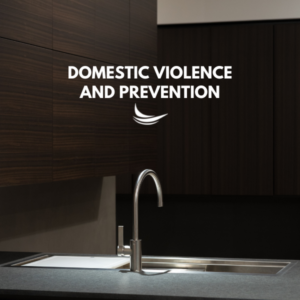 Not everyone feels safe, supported, or cared for in their environments. Yet having access to nurturing and responsive caregivers, violence-free relationships, and safe environments are important foundations for violence prevention, especially for young children and their early-brain-development.
Not everyone feels safe, supported, or cared for in their environments. Yet having access to nurturing and responsive caregivers, violence-free relationships, and safe environments are important foundations for violence prevention, especially for young children and their early-brain-development.
Abuse impacts all ages. Did you know that approximately 1 in 7 children in the United States have experienced abuse or neglect within the past year and approximately 1 in 10 older adults experience elder-abuse?
The impacts of violence on families and communities are devastating. Approximately 12 youth per day are victims to homicide. A disproportionate number of youth who are male, racial, or ethnic minorities, and/ or identify as LGBTQ are impacted by youth violence.
Violence is prevalent in intimate partner relationships. According to statistics,1 out of every 3 women experience intimate partner violence. These rates are 1 in 4 for men. In domestic violence homicides, firearms are heavily involved. Violence has permeated relationships and spaces that may no longer feel safe including our homes, schools, workplaces, and communities.
The CDC’s Violence Prevention has strategies to help prevent adverse-childhood-experiences from happening, including changing the norms, environments, and behaviors that contribute to childhood abuse and neglect, sexual abuse, community violence, elder abuse, firearm violence, intimate partner violence, sexual violence, and youth violence.
Here are several ways to prevent violence:
- Educate the public on abuse
- Treat mental illness and substance use
- Reduce disparities to increase access to quality supports
- Increase screening for early developmental milestones in children, mental health for all ages, and substance use, starting in youth
- Invest in programming aimed at preventing abuse, neglect, and violence and teach skills such as positive parenting and nonviolent communication skills
- Create safe spaces, with access to positive adults and role models
- Strengthen economic supports—employment, childcare, education, housing
There is urgency to act, and it will take a united effort—from public policy work for systemic change, medical and mental health care, public safety, social services, local business, faith communities and cultural supports. Collectively, we can work together to provide the types of environments where children can thrive.
Resources:
https://youth.gov/youth-topics/violence-prevention
https://www.cdc.gov/violenceprevention/index.html
https://www.futureswithoutviolence.org/
Written By: Charlotte Johnson, MA, LPCC
We’re Here to help
Our wellness experts will be happy to take care of you. You can CLICK HERE to schedule an appointment now or call (612)223-8898.
Meet Clinicians
We’re united by our commitment to providing effective, relevant, and innovative mental health support at all stages of your journey. Click Here to find out more about who we are, where we come from, and how we live out CARE’s mission every day.
The professionals at CARE are actively collecting and creating resources to help with what you need. We’re Here for You.



